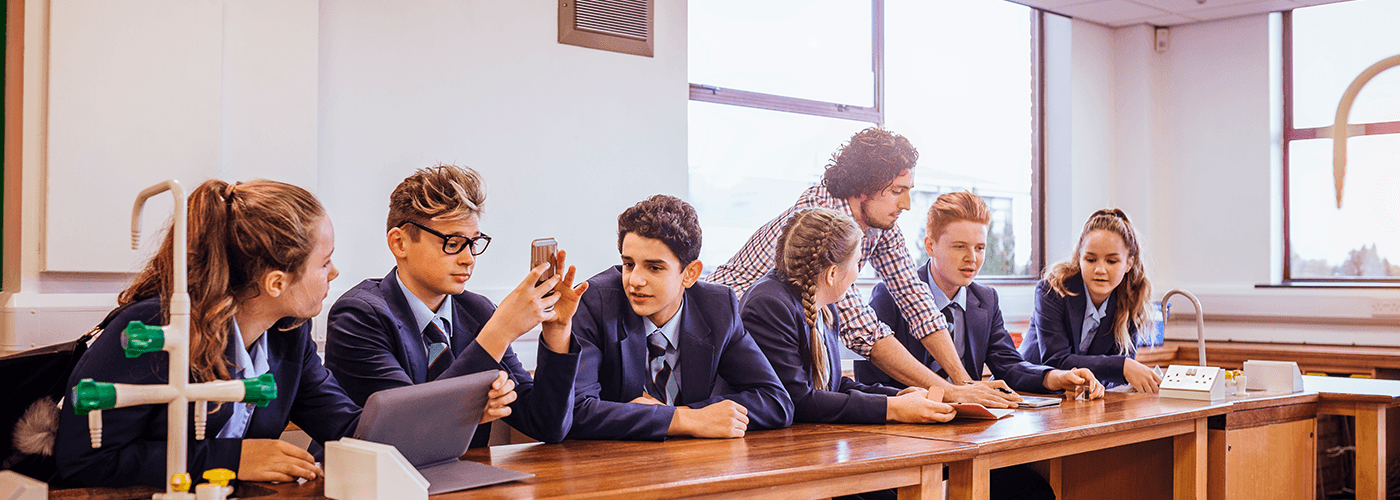
Students building resilience in the online environment is key. Academic excellence and long-term wellbeing depend on it.
Students are immersed in the digital world. Undoubtedly, it will not be an unfamiliar sight to walk into a boarding house or school common room and find the majority of students on a digital device. Offline communication is becoming silent. Online games can encourage students into a physically insular state, even if digitally they are interacting with many.
The locked-down internet
For many schools, networks can often be locked down with social media use either restricted or blocked. However, if a school network is too locked down, it can result in the opposite of what it’s trying to achieve.
In the last Ofsted Inspection E-safety briefing, their research found,
“pupils in the schools that had ‘managed’ systems had better knowledge and understanding of how to stay safe than those in schools with ‘locked down’ systems. Pupils were more vulnerable overall when schools used locked down systems because they were not given enough opportunities to learn how to assess and manage risk for themselves.”
Filtering will always be essential for protecting students from harm. But if children are restricted from exploring an environment seemed normal outside of school hours, they won’t necessary learn the vital skills of how to approach the internet safely. Instead, they are more likely to try and circumvent the filtering and find unprotected access to the internet.
Education is key
The KCSIE 2018 guidelines include the importance of online safety and mention how filtering and digital monitoring are a key aspect. It also suggests schools should teach about online safety effectively and links to the Education for a connected world framework published by the UK Council for Child Internet Safety.
This framework suggests schools should cover topics including online relationships, online reputation, online bullying, self-image and identity and other online safety connected topics. An effective way of teaching about these topics would be to be able to show realistic examples to students and discuss scenarios that may occur. This can be difficult to present in a system that is too locked down to cover these types of subjects.
Building resilience
Matt Blow from YoungMinds explained to Parliament,
“within digital literacy, there also needed to be a focus on building “digital resilience”: so that, when they [children] encounter harm, they know how to respond and are able to mitigate it themselves.”
Unlocking the whole internet would never be recommended for a school. Even when loosening access, schools would need to consider this on an age-appropriate basis. By using a filtering solution that allows granular access depending on the user group, schools can moderate how much access is given at each stage of the students learning journey. With an effective online safety teaching strategy also in place, students can gradually be introduced to more of the internet as they progress through school. Being exposed in a controlled environment, pupils can build resilience and the understanding of possible adverse experiences that could occur in the online space.
Striking the balance
For schools, it is imperative that the right balance is struck between web filtering and proactive monitoring. A robust filter will categorise content in real-time without dependence on unreliable and outdated blocklists and will prevent over-blocking and unreasonable restrictions. This is essential for protecting students from harm while still providing the freedom to learn without limits.
Proactive digital monitoring will enable the school to detect and online risks or incidents as they happen in real-time. Proactive monitoring both keystrokes and screen views, it will alert the school’s safeguarding team should it detect a student showing signs of risk for issues including cyberbullying, online abuse and hate, eating disorders, substance abuse, self-harm, suicidal thoughts, criminal and sexual exploitation, extremist views, violence, or inappropriate use of school resources. An intelligent proactive monitoring solution will only record any concerning online activity, not all activity, so as to protect student privacy.
Want to know more?
Speak to our experts today to find out how digital monitoring solutions such as Smoothwall Monitor can help you keep your students safe online.
Get in touch